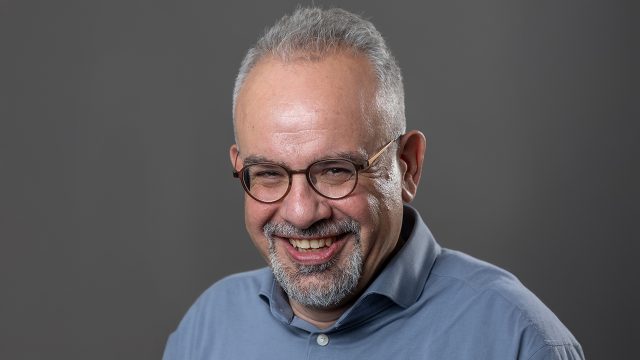
Our Focus
Macromolecular structures are key for generating new knowledge that can be translated to novel approaches for cancer therapy. We work on making macromolecular structures more useful for cancer research, by designing and providing methods to increase the information content of macromolecular structures and their interactions, either predicted by modern AI technologies, or experimental. We make experimental structures of macromolecules more accurate, we add missing information in the AI-predicted models (e.g. ligands, metals, and co-factors), and we provide visual and quantitative tools for analysing predicted protein interactions. We thus aspire to contribute in better understanding of molecular mechanisms, and to discover and analyse new potential targets for therapeutic intervention. In parallel, we study macromolecular interactions and structures to generate basic knowledge that could lead to novel targets in cancer research. Last years we are increasingly focusing on the biochemical basis of dynamic microtubule interactions and modifications in regulating chromosome segregation and the mechanisms underlying microtubule DE tyrosination. A more recent interest that has emerged is on the mechanisms of transcriptional activation and attracts focused effort from the team.
About Anastassis Perrakis

Anastassis Perrakis
My Research
Tassos Perrakis obtained his DPhil in Chemistry from the University of York in 1996, after pre-doctoral research he performed at EMBL Hamburg. He then received an EMBO long-term fellowship, to work at the NKI on DNA mismatch recognition and repair. After two years, he moved as a staff scientist and then a team leader to EMBL Grenoble, where he pursued the development of the ARP/wARP software package for X-ray crystallography, participated in a team that built and commissioned the first µ-diffractometer at ESRF, and pursued his post-doctoral research interests in DNA mismatch repair.
With the change of the millennium, Tassos moved back to the NKI as an independent group leader. Over the last two decades there, his research team pioneered both experimental and computational approaches to X-ray structure determination, like ARP/wARP, a procedure to build protein structure by pattern recognition methods in crystallographic experiments, and PDB-REDO, a decision-making system that allows fully automated “total makeover” of all X-ray structures in the PDB. More recently his interests have shifted towards the application of AI methods to predict protein structures; building on the AlphaFold revolution, his team has built the AlphaFill data bank, adding essential co-factors, metal ions, and other ligands to predicted protein structures. His biochemical research evolves around the structure and function of macromolecules. The group currently focuses on the function and structure of Autotaxin and the LPA signalling axis, contributing new ideas and tools for understanding and utilising this pathway as a target for therapeutic approaches. Concurrently, the team maintains active collaborations that revolve around the role of tubulin modifying and interacting proteins, and how they affect cellular function, and in particular late events in mitosis.
Finally, Tassos has an active involvement in European initiatives being the Coordinator of the “INEXT-Discovery” H2020 program which enables Structural Biology research by providing transnational access to high-end equipment and also promoting collaborative research activities that promote integrative structural biology research approaches. He also has a shared appointment as “ERA chair” in the University of Patras (Greece), transferring knowledge and mentoring a research team in the general area of structural cell biology.
Awards
2001: EMBO Young Investigator
1996: EMBO long-term post-doctoral fellowship
Key Publications
algado-Polo F, Borza R., et al, and Perrakis A* Autotaxin facilitates selective LPA receptor signaling. Cell Chemical Biology. Accepted for publication
Hekkelman ML, de Vries I, Joosten RP, Perrakis A*. AlphaFill: enriching AlphaFold models with ligands and cofactors. Nature Methods. 2022 Nov 24.
Landskron, L, Bak J, Adamopoulos A, Perrakis A*, Brummelkamp TR*, Posttranslational modification of microtubules by the MATCAP detyrosinase, Science 376 (6595)
Adamopoulos A, Landskron L, (…) Brummelkamp TR, Perrakis A*. Crystal structure of the tubulin tyrosine carboxypeptidase complex VASH1-SVBP. Nature Structural Molecular Biology. 2019 Jul;26(7):567-570.
Sacristan C, (…) A, Perrakis A, Kops GJ. Dynamic kinetochore size regulation promotes microtubule capture and chromosome biorientation in mitosis. Nature Cell Biology. 2018 Jul;20(7):800-810.
Salgado-Polo F, Fish A (…) Perrakis A*. Lysophosphatidic acid produced by autotaxin acts as an allosteric modulator of its catalytic efficiency. Journal Biological Chemistry. 2018 Sep 14;293(37):14312-14327.
Research tools and resources
The AlphaFill databank (alpha-fill.eu) databank and web service for providing ligand structures of predicted protein structures.
The PDB-REDO (www.pdb-redo.eu) web server and databank for crystallographic structure refinement and validation
The LAHMA (lahma.pdb-redo.eu) web server for comparing homologuous protein structures.
The CCD2 (ccd.rhpc.nki.nl) web server for protein structure analysis and designing expression constructs.
The Ramachandran Z-score for protein structure assessment (https://pdb-redo.eu/tortoize).
Members
| Anastassis Perrakis Group leader and Head of the division Biochemistry department | Daniel Alvarez Salmoral PhD Student | Hans Wienk Project Manager |
| Krista Joosten Post Doc | Ren Xie Phd Student | Robbie Joosten Research associate |
| Maarten Hekkelman Senior PostDoc | Maria Konijnenberg PhD student | Razvan Borza PhD student |